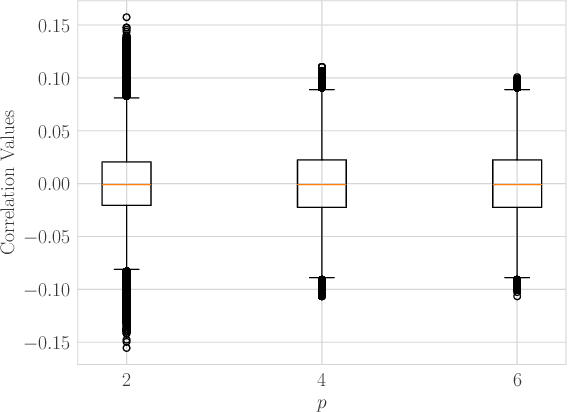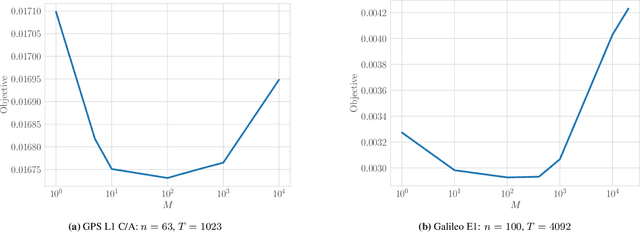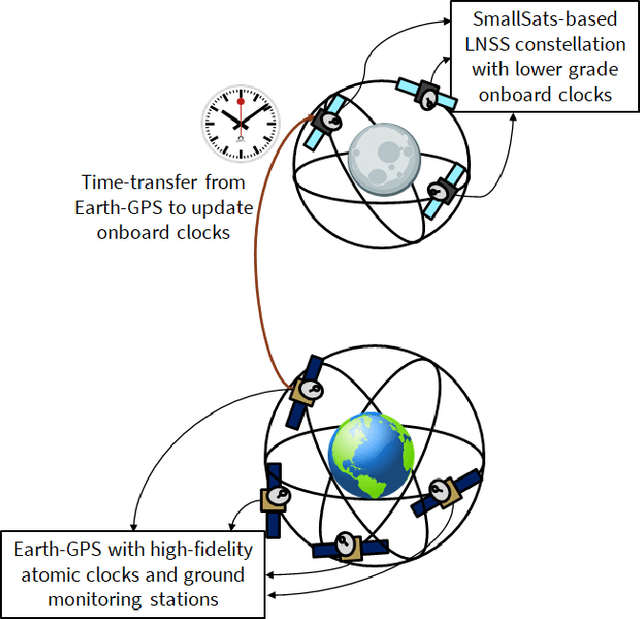Tara Mina
Large-Scale GNSS Spreading Code Optimization
Oct 06, 2024



Abstract:We propose a bit-flip descent method for optimizing binary spreading codes with large family sizes and long lengths, addressing the challenges of large-scale code design in GNSS and emerging PNT applications. The method iteratively flips code bits to improve the codes' auto- and cross-correlation properties. In our proposed method, bits are selected by sampling a small set of candidate bits and choosing the one that offers the best improvement in performance. The method leverages the fact that incremental impact of a bit flip on the auto- and cross-correlation may be efficiently computed without recalculating the entire function. We apply this method to two code design problems modeled after the GPS L1 C/A and Galileo E1 codes, demonstrating rapid convergence to low-correlation codes. The proposed approach offers a powerful tool for developing spreading codes that meet the demanding requirements of modern and future satellite navigation systems.
Spreading Code Optimization for Low-Earth Orbit Satellites via Mixed-Integer Convex Programming
Apr 19, 2024Abstract:Optimizing the correlation properties of spreading codes is critical for minimizing inter-channel interference in satellite navigation systems. By improving the codes' correlation sidelobes, we can enhance navigation performance while minimizing the required spreading code lengths. In the case of low earth orbit (LEO) satellite navigation, shorter code lengths (on the order of a hundred) are preferred due to their ability to achieve fast signal acquisition. Additionally, the relatively high signal-to-noise ratio (SNR) in LEO systems reduces the need for longer spreading codes to mitigate inter-channel interference. In this work, we propose a two-stage block coordinate descent (BCD) method which optimizes the codes' correlation properties while enforcing the autocorrelation sidelobe zero (ACZ) property. In each iteration of the BCD method, we solve a mixed-integer convex program (MICP) over a block of 25 binary variables. Our method is applicable to spreading code families of arbitrary sizes and lengths, and we demonstrate its effectiveness for a problem with 66 length-127 codes and a problem with 130 length-257 codes.
Binary sequence set optimization for CDMA applications via mixed-integer quadratic programming
Nov 01, 2022Abstract:Finding sets of binary sequences with low auto- and cross-correlation properties is a hard combinatorial optimization problem with numerous applications, including multiple-input-multiple-output (MIMO) radar and global navigation satellite systems (GNSS). The sum of squared correlations, also known as the integrated sidelobe level (ISL), is a quartic function in the variables and is a commonly-used metric of sequence set quality. In this paper, we show that the ISL minimization problem may be formulated as a mixed-integer quadratic program (MIQP). We then present a block coordinate descent (BCD) algorithm that iteratively optimizes over subsets of variables. The subset optimization subproblems are also MIQPs which may be handled more efficiently using specialized solvers than using brute-force search; this allows us to perform BCD over larger variable subsets than previously possible. Our approach was used to find sets of four binary sequences of lengths up to 1023 with better ISL performance than Gold codes and sequence sets found using existing BCD methods.
A Case Study Analysis for Designing a Lunar Navigation Satellite System with Time-Transfer from Earth-GPS
Jan 03, 2022



Abstract:Recently, there has been a growing interest in the use of a SmallSat platform for the future Lunar Navigation Satellite System (LNSS) to allow for cost-effectiveness and rapid deployment. However, many design choices are yet to be finalized for the SmallSat-based LNSS, including the onboard clock and the orbit type. As compared to the legacy Earth-GPS, designing an LNSS poses unique challenges: (a) restricted Size, Weight, and Power (SWaP) of the onboard clock, which limits the timing stability; (b) limited lunar ground monitoring stations, which engenders a greater preference toward stable LNSS satellite orbits. In this current work, we analyze the trade-off between different design considerations related to the onboard clock and the lunar orbit type for designing an LNSS with time-transfer from Earth-GPS. Our proposed time-transfer architecture combines the intermittently available Earth-GPS signals in a timing filter to alleviate the cost and SWaP requirements of the onboard clocks. Specifically, we conduct multiple case studies with different grades of low-SWaP clocks and various previously studied lunar orbit types. We estimate the lunar User Equivalent Range Error (UERE) metric to characterize the ranging accuracy of signals transmitted from an LNSS satellite. Using the Systems Tool Kit (STK)-based simulation setup from Analytical Graphics, Inc. (AGI), we evaluate the lunar UERE across various case studies of the LNSS design to demonstrate comparable performance as that of the legacy Earth-GPS, even while using a low-SWaP onboard clock. We further perform sensitivity analysis to investigate the variation in the lunar UERE metric across different case studies as the Earth-GPS measurement update rates are varied.
 Add to Chrome
Add to Chrome Add to Firefox
Add to Firefox Add to Edge
Add to Edge